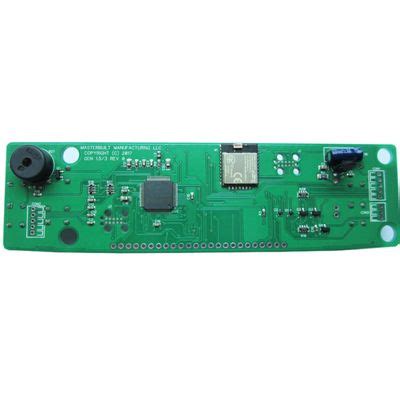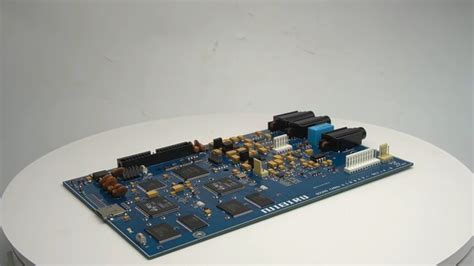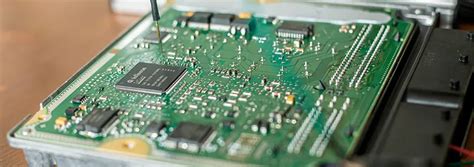High frequency pcb substrate
Understanding High Frequency PCB Substrate Materials
High frequency PCB substrate materials play a crucial role in the performance and reliability of high-speed electronic circuits. As the demand for faster and more efficient electronic devices continues to grow, understanding the properties and applications of these substrates becomes increasingly important. High frequency PCBs are used in a variety of applications, including telecommunications, radar systems, and advanced computing, where signal integrity and minimal loss are paramount. Therefore, selecting the appropriate substrate material is essential to ensure optimal performance.
One of the primary considerations when choosing a high frequency PCB substrate is its dielectric constant, often denoted as εr.
This property affects the speed at which an electrical signal can travel through the material. A lower dielectric constant allows for faster signal transmission, which is critical in high-frequency applications. Materials such as PTFE (polytetrafluoroethylene), commonly known by the brand name Teflon, are popular choices due to their low dielectric constant and excellent electrical properties. However, PTFE can be challenging to work with due to its mechanical properties, necessitating careful handling during the manufacturing process.
In addition to the dielectric constant, the loss tangent, or dissipation factor, is another vital parameter.
This factor measures the inherent energy loss of a material as an electromagnetic wave propagates through it. A lower loss tangent indicates that the material is more efficient at transmitting signals with minimal energy loss, which is crucial for maintaining signal integrity in high-frequency applications. Materials like Rogers RO3000 series and Taconic RF-35 are often selected for their low loss tangent, making them suitable for high-performance applications.
Thermal management is another critical aspect to consider when selecting a high frequency PCB substrate.
As electronic devices operate at higher frequencies, they tend to generate more heat, which can affect performance and reliability. Therefore, substrates with good thermal conductivity are preferred to dissipate heat effectively. Ceramic-filled PTFE composites are often used in such scenarios due to their excellent thermal properties, providing a balance between electrical performance and heat management.
Moreover, the mechanical properties of the substrate material should not be overlooked.
High frequency PCBs often require precise manufacturing processes, and the substrate must withstand these processes without deforming or losing its properties. Materials with good dimensional stability and mechanical strength are essential to ensure that the PCB maintains its integrity during fabrication and operation. This is particularly important in applications where the PCB may be subjected to mechanical stress or environmental changes.
Furthermore, cost considerations also play a role in the selection of high frequency PCB substrates.
While advanced materials like PTFE and ceramic composites offer superior performance, they can be more expensive than traditional FR-4 substrates. Therefore, it is essential to balance performance requirements with budget constraints, especially in large-scale production.
In conclusion, understanding the properties and applications of high frequency PCB substrate materials is essential for designing efficient and reliable electronic circuits. By considering factors such as dielectric constant, loss tangent, thermal management, mechanical properties, and cost, engineers can select the most appropriate substrate for their specific application. As technology continues to advance, the development of new materials and manufacturing techniques will further enhance the capabilities of high frequency PCBs, enabling the next generation of high-speed electronic devices.
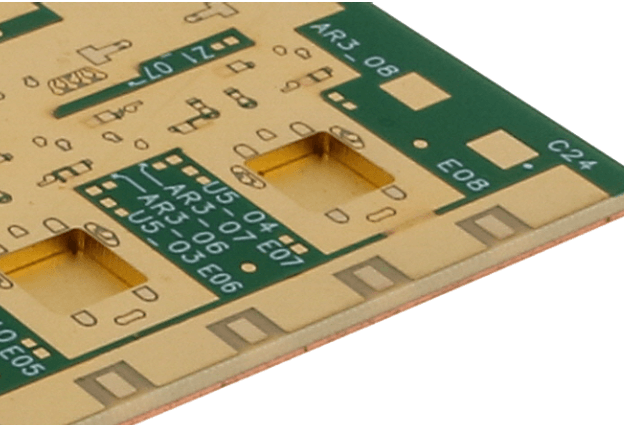
Design Considerations for High Frequency PCB Substrates
When designing high frequency printed circuit boards (PCBs), selecting the appropriate substrate material is a critical consideration that significantly impacts the performance and reliability of the final product. High frequency applications, often found in telecommunications, radar systems, and advanced computing, demand substrates that can handle rapid signal transmission with minimal loss and distortion. Therefore, understanding the properties and implications of various substrate materials is essential for engineers and designers aiming to optimize their high frequency PCB designs.
To begin with, one of the primary factors to consider is the dielectric constant (Dk) of the substrate material.
The dielectric constant affects the speed at which signals propagate through the PCB. Materials with a lower dielectric constant are generally preferred for high frequency applications because they allow signals to travel faster, reducing the potential for signal delay and distortion. Additionally, a consistent dielectric constant across the substrate is crucial to ensure uniform signal integrity throughout the board. Variations in Dk can lead to impedance mismatches, which can cause signal reflections and degrade overall performance.
Another important consideration is the loss tangent, or dissipation factor, of the substrate material.
This parameter measures how much of the signal power is lost as heat within the substrate. For high frequency applications, a low loss tangent is desirable to minimize signal attenuation and maintain signal strength over longer distances. Materials with high loss tangents can lead to significant power loss, which not only affects performance but also increases the thermal load on the PCB, potentially leading to overheating and reliability issues.
Thermal management is another critical aspect of high frequency PCB design.
As frequencies increase, so does the potential for heat generation. Therefore, selecting a substrate with good thermal conductivity is essential to dissipate heat effectively and prevent damage to the board and its components. Materials such as ceramics and certain advanced polymers offer superior thermal properties compared to traditional FR-4 substrates, making them suitable choices for high frequency applications.
Moreover, the mechanical properties of the substrate should not be overlooked.
High frequency PCBs often require precise manufacturing processes, and the substrate must be able to withstand these without warping or degrading. The coefficient of thermal expansion (CTE) is a key parameter in this regard, as it indicates how much the material will expand or contract with temperature changes. A substrate with a CTE closely matched to that of the copper traces can help prevent mechanical stress and potential failure during thermal cycling.
In addition to these technical considerations, cost and availability of materials also play a role in substrate selection.
While advanced materials like PTFE (polytetrafluoroethylene) and ceramics offer excellent high frequency performance, they can be significantly more expensive than standard options. Designers must balance performance requirements with budget constraints, often necessitating a compromise between ideal material properties and practical considerations.
In conclusion, the design of high frequency PCBs requires careful consideration of substrate materials to ensure optimal performance and reliability. By evaluating factors such as dielectric constant, loss tangent, thermal management, mechanical properties, and cost, designers can make informed decisions that align with the specific needs of their applications. As technology continues to advance, the demand for high frequency PCBs will only grow, making the selection of appropriate substrates an increasingly important aspect of electronic design.

Advantages of Using High Frequency PCB Substrates in RF Applications
High frequency PCB substrates have become increasingly vital in the realm of radio frequency (RF) applications, offering a multitude of advantages that enhance the performance and reliability of electronic devices. As the demand for faster and more efficient communication systems grows, the need for substrates that can support high frequency signals without significant loss or interference becomes paramount.
One of the primary advantages of using high frequency PCB substrates is their ability to maintain signal integrity.
These substrates are designed to minimize signal loss, which is crucial in RF applications where even minor distortions can lead to significant performance degradation. By ensuring that signals are transmitted with minimal attenuation, high frequency substrates help maintain the clarity and strength of the signal, which is essential for applications such as wireless communication, radar systems, and satellite transmissions.
In addition to preserving signal integrity, high frequency PCB substrates offer excellent thermal management properties.
RF applications often involve high power levels, which can generate substantial heat. Effective thermal management is critical to prevent overheating and ensure the longevity and reliability of the electronic components. High frequency substrates are typically made from materials with superior thermal conductivity, allowing them to dissipate heat more efficiently than traditional substrates. This capability not only enhances the performance of the device but also reduces the risk of thermal-related failures, thereby increasing the overall reliability of the system.
Moreover, high frequency PCB substrates exhibit low dielectric constant and low loss tangent characteristics, which are essential for high-speed signal transmission.
A low dielectric constant reduces the delay in signal propagation, enabling faster data transmission rates. Meanwhile, a low loss tangent minimizes energy loss as the signal travels through the substrate, ensuring that more of the signal’s power reaches its destination. These properties are particularly beneficial in RF applications where high-speed data transfer and minimal signal loss are critical for optimal performance.
Another significant advantage of high frequency PCB substrates is their ability to support miniaturization.
As electronic devices become more compact, the need for smaller and more efficient components becomes increasingly important. High frequency substrates allow for the design of smaller circuits without compromising performance, enabling the development of compact and lightweight devices. This is particularly advantageous in applications such as mobile communication devices and wearable technology, where space and weight are at a premium.
Furthermore, high frequency PCB substrates are known for their excellent mechanical stability and durability.
They are often made from materials that can withstand harsh environmental conditions, such as extreme temperatures and humidity. This robustness ensures that the substrates can maintain their performance over time, even in challenging operating environments. As a result, devices that utilize high frequency substrates are more reliable and have a longer operational lifespan, which is a critical consideration in many RF applications.
In conclusion, the advantages of using high frequency PCB substrates in RF applications are manifold. From maintaining signal integrity and providing superior thermal management to supporting miniaturization and offering mechanical stability, these substrates play a crucial role in enhancing the performance and reliability of electronic devices. As technology continues to advance and the demand for high-speed, efficient communication systems grows, the importance of high frequency PCB substrates in RF applications will only continue to increase.
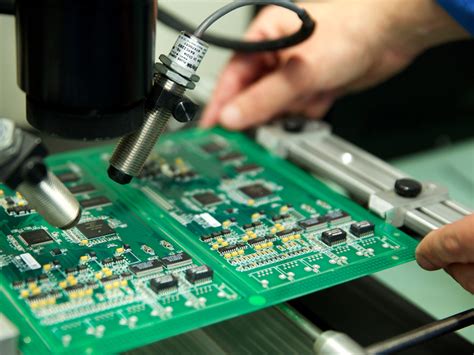
Challenges in Manufacturing High Frequency PCB Substrates
The manufacturing of high frequency PCB (Printed Circuit Board) substrates presents a unique set of challenges that are critical to address in order to meet the demands of modern electronic applications. As technology continues to advance, the need for PCBs that can operate efficiently at high frequencies has become increasingly important, particularly in industries such as telecommunications, aerospace, and automotive. These high frequency applications require substrates that not only support rapid signal transmission but also maintain signal integrity and minimize losses.
One of the primary challenges in manufacturing high frequency PCB substrates is the selection of appropriate materials.
Unlike standard PCBs, which often use FR-4 material, high frequency PCBs require substrates with low dielectric constants and low loss tangents to ensure minimal signal distortion and attenuation. Materials such as PTFE (Polytetrafluoroethylene), ceramics, and certain advanced composites are commonly used. However, these materials can be more expensive and difficult to work with, requiring specialized equipment and processes. The choice of material directly impacts the performance of the PCB, making it crucial for manufacturers to carefully consider the trade-offs between cost, performance, and manufacturability.
In addition to material selection, the precision of the manufacturing process is another significant challenge.
High frequency PCBs often feature intricate designs with fine lines and spaces, which necessitate advanced fabrication techniques. Achieving the required level of precision can be difficult, as even minor deviations can lead to significant performance issues. Manufacturers must employ state-of-the-art equipment and maintain stringent quality control measures to ensure that the PCBs meet the necessary specifications. This includes the use of advanced photolithography, etching, and plating processes, which can increase production complexity and cost.
Thermal management is another critical aspect that poses challenges in the manufacturing of high frequency PCB substrates.
As frequencies increase, so does the potential for heat generation, which can adversely affect the performance and reliability of the PCB. Effective thermal management solutions, such as the incorporation of thermal vias, heat sinks, and advanced cooling techniques, are essential to dissipate heat and maintain optimal operating conditions. However, integrating these solutions into the PCB design without compromising electrical performance requires careful planning and expertise.
Moreover, the miniaturization trend in electronics adds another layer of complexity to the manufacturing process.
As devices become smaller and more compact, the demand for high frequency PCBs with reduced size and weight increases. This necessitates the development of innovative manufacturing techniques that can accommodate smaller form factors while still delivering high performance. The integration of multiple functions into a single PCB further complicates the design and manufacturing process, requiring a multidisciplinary approach that combines expertise in materials science, electrical engineering, and thermal management.
Finally, the rapid pace of technological advancement means that manufacturers must continuously adapt to new requirements and standards.
Staying abreast of the latest developments in high frequency applications and materials is essential to remain competitive in the market. This requires ongoing investment in research and development, as well as collaboration with industry partners and customers to understand emerging needs and trends.
In conclusion, the manufacturing of high frequency PCB substrates involves a complex interplay of material selection, precision fabrication, thermal management, and miniaturization. Overcoming these challenges requires a comprehensive understanding of the underlying principles and a commitment to innovation and quality. As the demand for high frequency applications continues to grow, manufacturers must remain agile and forward-thinking to deliver solutions that meet the evolving needs of the industry.

